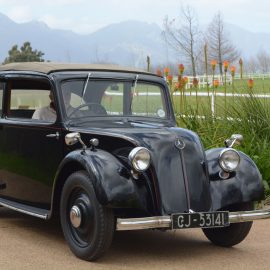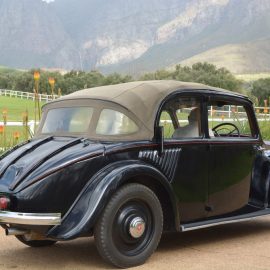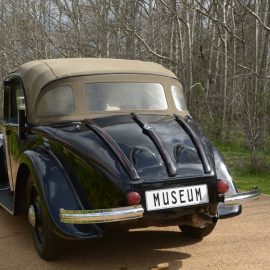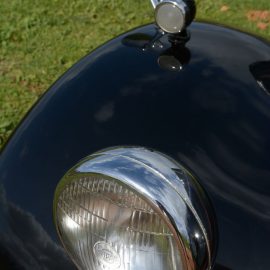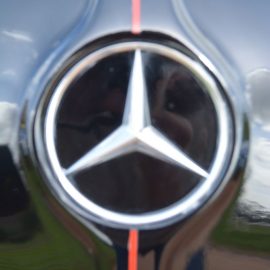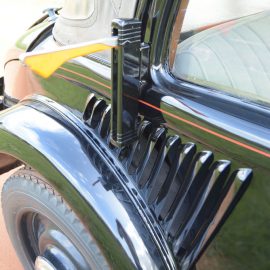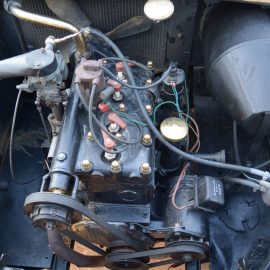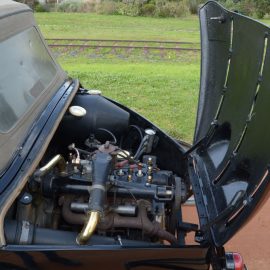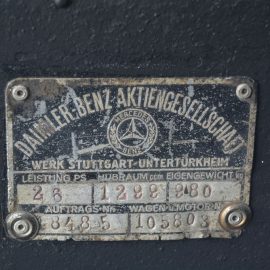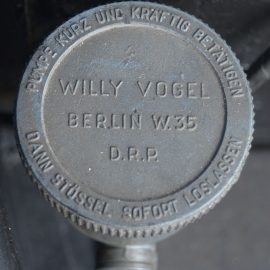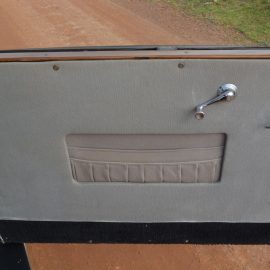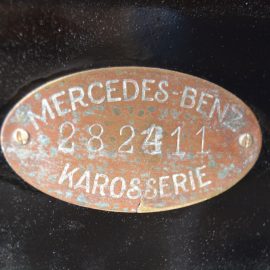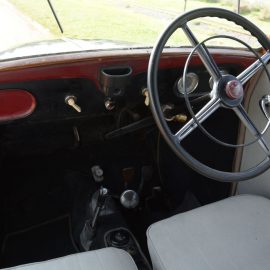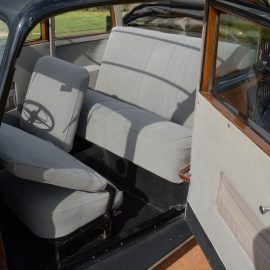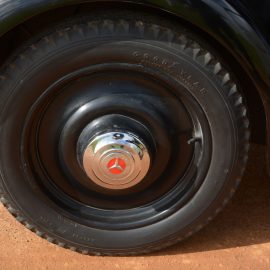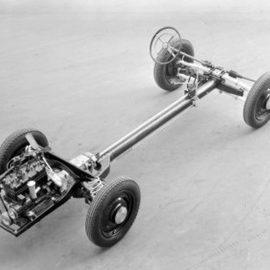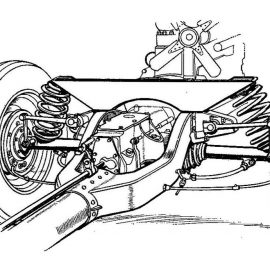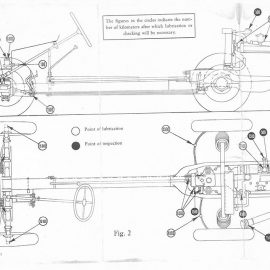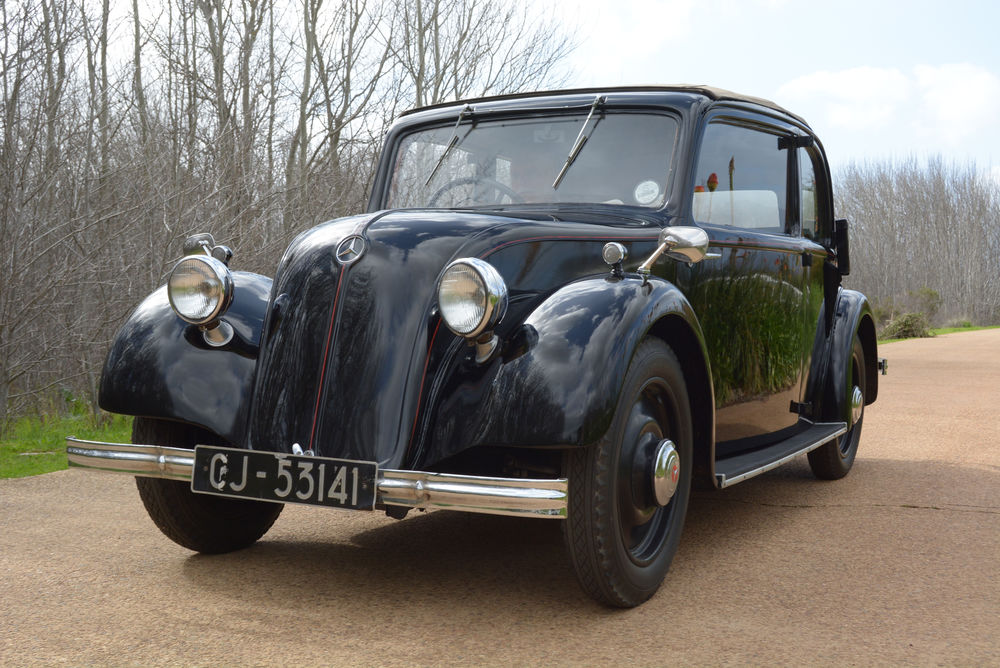
02 Sep Collection in action: Mercedes-Benz 130H
Think of affordable people’s cars and one’s mind generally thinks of the Model T Ford and Volkswagen Beetle, both of which were huge sales successes. There were others that did not capture the imagination of the masses, including one carrying a Three-Pointed Star…
In 1930, Daimler-Benz entrusted chief engineer Hans Nibel with the development of a small rear-engined car. This was something of a turnaround by the company because prior to this, during his brief employment at the company, Ferdinand Porsche had put forward ideas for a small, lightweight car but his proposal was not met with enthusiasm by Daimler-Benz’s board. Porsche left in 1929 for Steyr, and in 1934 was contracted to develop a ‘people’s car’ for VW… Nevertheless, working with chassis engineer Max Wagner, Nibel created a number of prototypes with varying mechanical configurations, culminating in the W23-Series 130H – the H stands for ‘heck’, German for ‘rear’, although this suffix was not originally used by Mercedes-Benz.. It was conceived around 1931 but was only presented to the public at the Berlin Motor Show in February 1934.
The 130H was powered by a 1 308 cm3 (a body plate states 1 299…) four-cylinder side-valve engine producing 19 kW at 3 400 r/min. It was mated with a three-speed plus overdrive transmission – of which more later – and was capable of realising a top speed of 92 km/h. Although Wagner is credited with the design of the tubular steel forked backbone chassis, the layout is said to have been inspired by Tatra’s celebrated Austrian engineer Hans Ledwinka. The 130H’s layout featured all-round independent suspension, with transverse leaf springs at the front, and coil springs/swing arms at the rear. Lever-arm shock absorbers were used. Unusual for this class of car, hydraulic four-wheel brakes were standard and provided strong retardation. The cross-members supporting the body were mounted below the chassis’ backbone for a lower centre of gravity. Although the ride quality was excellent, with two-thirds of the car’s mass over the rear axle line, the car’s handling proved to be poor…
The car was sold as a sedan, an open-top sedan or a convertible (with and without cabrio cover and without side windows), each being fitted with two doors. The shape is thought to have been inspired by Edmund Rumpler’s aerodynamic ‘Tropfenwagen’ (‘teardrop car’). Although still not the smoothest of shapes – separate front mudguards and exposed headlamps for example – the 130H has a drag coefficient of 0,516, which was excellent for the time. Being rear-engined, the 130H did not require a front grille although it is thought a dummy one was considered, so Mercedes-Benz’s trademark three-pointed star was embedded in a raised beading that ran up and over the bonnet.
So what was the reaction? In issue 53 of ‘Motor und Sport’, the following appeared:
“A familiar shape is always attributable to tradition. But tradition presupposes there is a process of development. However, since what we are dealing with here is an entirely new and viable shape for motor vehicle production, it would be unreasonable to expect the design at this stage to have already reached classical perfection. The possibilities that lie at the heart of this commonplace development of the future are best demonstrated by the feeling one has when one rides in this car. It has comfortable seating, and the large, broad windows offer an unimpeded view over the surrounding countryside. The suspension is so soft and accomplished that it is barely possible to determine the nature of the road surface. Those who perhaps harbour a dislike for the vehicle’s exterior, because it deliberately sets a revolutionary idea against hitherto traditional formal elements, will be forced to recognise its certain future supremacy as soon as they take a ride in it.”
The presence of FMM’s open-top sedan is quite a story. Documentation exists that the car – chassis number 105803 – was delivered to Mercedes-Benz’s distribution agency in London on 10 October 1934, from where it was sold and passed through the hands of a number of owners in the UK. In a feature article published in the December 1984 issue of CAR magazine, Herman Fourie tells of when in 1952 in Pretoria, its then owner, a Dr Wille, sold it to a young medical student, a Mr J du Toit, who eventually moved to Paarl before he sold it on. But du Toit’s memories of the 130H were not lost and in 1976 he saw this car advertised in a British motoring magazine. But despite lengthy negotiations he could not purchase the car, which was nearly scrapped before being bought and refurbished by an M-B enthusiast living in the Isle of Man. He was eventually persuaded to sell the car to the now Dr du Toit, and so it arrived in SA in a container. In 1985, the Heidelberg Motor Museum became aware of the car and in June made an offer to purchase, which was accepted. The Heidelberg collection was the foundation for FMM and the 130H has been part of the museum’s assets ever since.
Although the car was built in 1934 it would appear to be a near-1935 model because a small number of improvements for that model year are present on this car. The minor changes included revisions to the instrument panel with two large circular gauges with ivory-coloured dials positioned directly in front of the driver, intake louvres in the side panels below the rear side windows that channelled air towards the radiator positioned above the rear axle line, and the rounded engine lid featured three longitudinal vents with cover plates, which gave the vehicle a distinctive and unmistakable rear characteristic. Standard features from inception included a foot-operated one-shot lubrication system, a lockable steering column, a cigarette lighter and, unusually for such a car of the time, a cabin heater.
Accepting that the 130H is a Mercedes-Benz does take a bit of getting used to. It is a car that surprises, though, because it does have a lot of appeal. The two large, rear hinged doors give access to a fairly roomy interior, and the light grey upholstery and interior contribute to the airy ambience. The large glasshouse also adds to the effect. But if you really want an al fresco experience, undo two clips on the single-pane windscreen header rail and fold back the fabric roof to behind the rear seat, remove the clip-on support rails and there you have it – a cabriolet with solid sides!
The seats are comfortable enough, and although there is not a great deal of rear legroom, but as with any small car, with a bit of compromise a full set of passengers can be accommodated. There is not much room in the front luggage compartment around the spare wheel, but there is storage space behind the raised bench rear seat.
The motor fires up easily and although hardly a powerhouse, it propels the car along easily both in traffic and out on the open road, thanks to the somewhat sophisticated gearbox. The lower three speeds and reverse are laid out in a conventional H-gate, but once in third – to the right and down – overdrive fourth can be selected by moving the lever to the right and up, and when the driver is ready to engage the gear, simply depress the clutch, just as with a regular pre-selector ’box. Neat… Manoeuvrability is easy thanks to nicely-weighted rack-and-pinion steering. Yes, the ride is compliant, and as for the handling, discretion is the better part of valour and I was not prepared to put the common claims of swing-axle instability to the test. Driving an 85-year-old car today is something to enjoy in a relaxed fashion.
The 130H’s high spec obviously came at a cost, making the car expensive when compared with its rivals, which probably was the major reason for its downfall. Only 4 298 were built before the model was discontinued in 1936 after just over two years of production. .
Visitor note: The car is currently on view in Hall B.




